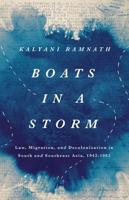Publisher's Synopsis
This book is the first comprehensive history and analysis of legal fictions in the common law. It examines their origins and development over the last 400 years and covers numerous legal domains from civil and criminal law to administrative and international law. It covers a wide range of British and American examples from corporate personhood and civil death to constructive eviction and the scintilla juris. Legal fictions have been a source of hostility, confusion, amusement, and fascination ever since British lawyers first turned their attention to the subject, in the early 17th century. The book presents a new theory of legal fictions, showing how certain doctrines take a distinctively artificial form that differentiates them from the routine artifice we see everywhere in the law. Whereas conventional accounts assert that falsity is the fiction's essential requirement, Law's Artifice shows that the fictions' critics and defenders alike have always been drawn to examples that brazenly and ostentatiously present themselves as constructs, exhibiting a kind of artifice that includes falsehoods but is hardly limited to that category. Rather than attempting to establish criteria for deciding what qualifies as a legal fiction, this study seeks to understand why people perceive certain doctrines as fictional and how to make sense of the disagreement that sometimes arises. Doing so requires an understanding not only of legal history, but also of literary history and theory, philosophy of language, and aesthetics. Drawing on recent research in all of these fields, Law's Artifice shows how concerns about legal fictions have persisted even as the contents of the category have changed over time.








